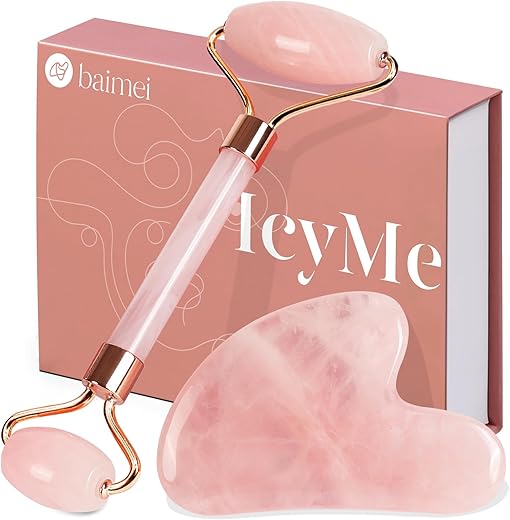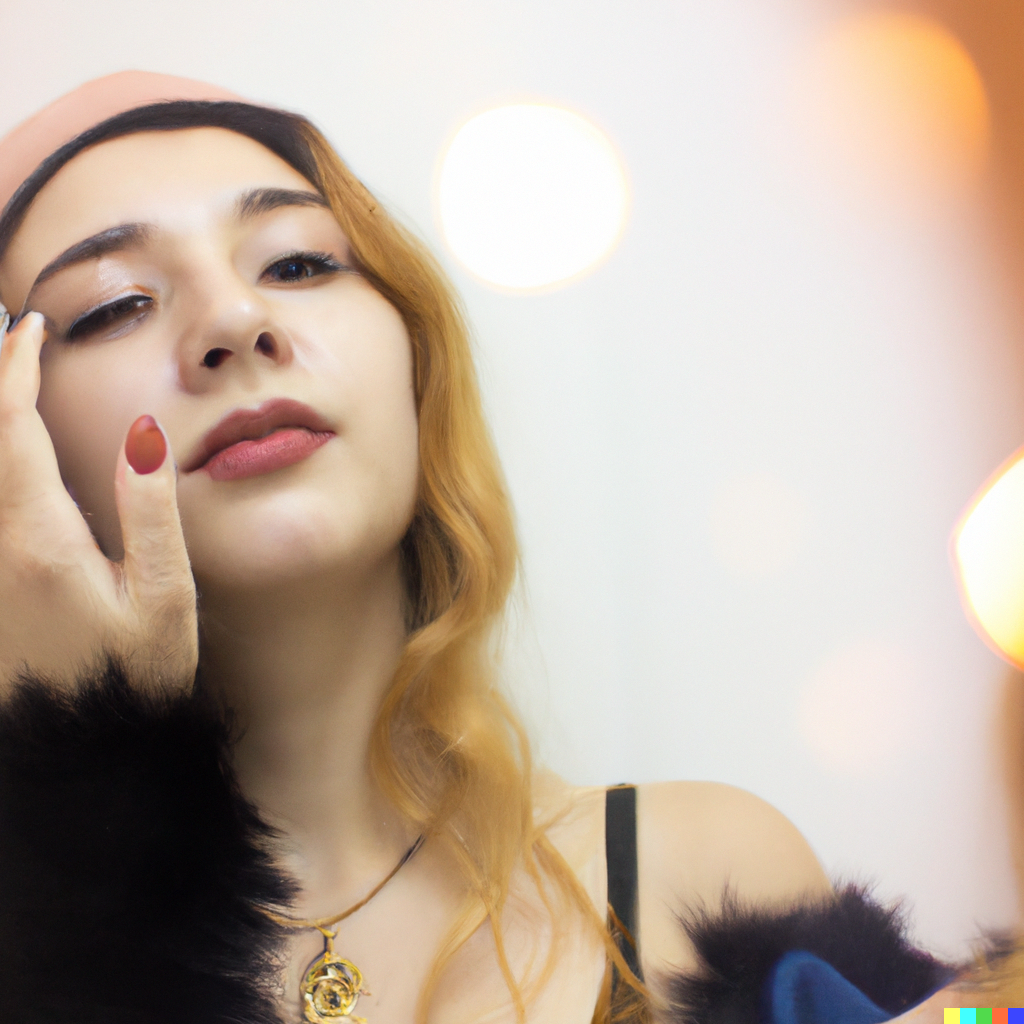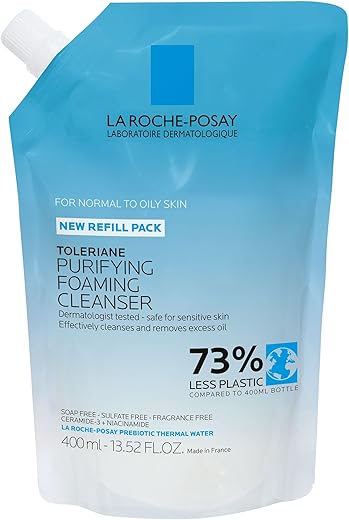
Roll Away Puffiness: Top Facial Rollers Compared
Why Roll Away Puffiness: An Overview
Facial rollers promise faster, visible relief from morning puffiness, under-eye swelling, and facial fluid retention. These simple tools use gentle pressure and movement to stimulate lymphatic drainage and increase circulation. Many users see a quicker, smoother look after a few minutes.
This guide explains the science behind roller de-puffing, compares popular materials like jade, rose quartz, metal, and silicone, and highlights features that actually improve results. You’ll get a step-by-step routine for morning use, tips to boost effectiveness, and a decision guide to match rollers to your budget and skin type. We also cover cleaning, safety, and common questions so you can roll with confidence. Expect practical comparisons focused on de-puffing efficacy, usability, and value, not hype or exaggerated claims.




Top 10 Face Rollers You Can’t Miss in 2024 Best Sellers
How Facial Rollers Reduce Puffiness: The Science and Physiology
Lymphatic drainage: gentle pressure, real movement
Facial rollers apply light, directional pressure that helps move interstitial fluid toward lymph nodes (along the jawline, behind the ears). That mechanical nudging speeds removal of excess fluid that causes morning puffiness, especially beneath the eyes. Think of the roller as a guided, mini lymphatic massage you can do in 3–5 minutes.
Microcirculation and temporary tightening
Rolling also boosts superficial blood flow. Increased microcirculation brings oxygen and nutrients to skin, which can brighten and reduce the look of swelling. The combined effect of pressure + cool surfaces (metal or chilled rollers) leads to a short-term tightening sensation as vessels constrict and tissues compact.
Immediate vs. cumulative benefits
Immediate, transient results are the most reliable: compressed fluid shifts away from a targeted area (under-eyes to cheeks/jaw) and cold-induced vasoconstriction reduces puffiness for hours. Longer-term changes—subtler contouring, improved skin texture—require consistent use (daily or several times weekly) alongside good sleep, salt moderation, and hydration. Rollers are an adjunct, not a standalone remodeler.
What the evidence says
Dermatologists and estheticians support rollers for temporary de-puffing and relaxation. Small studies and clinical consensus back increased local circulation and lymph flow with manual massage techniques, but robust randomized trials specifically on rollers are limited. Much of the strongest evidence comes from lymphatic massage research, not brand-specific roller trials.
Common misconceptions and realistic outcomes
Next, we’ll compare materials and roller types to help you pick the tool that best amplifies these physiological effects.
Types of Facial Rollers and Materials: Which One Targets Puffiness Best?
Stone rollers (jade, rose quartz, amethyst)
Dual-ended stone rollers are the classic: a larger barrel for cheeks/forehead and a smaller one for under-eyes. Natural stones feel cool to the touch and hold temperature well, so a quick chill in the fridge gives immediate vasoconstriction and a brisk de-puffing effect. Brands like Mount Lai and Herbivore popularized this look; users often report a pleasant, calming ritual.
Metal and stainless-steel rollers
Metal rollers (stainless steel, aluminum-alloy) are hygienic, durable, and conduct cold more efficiently than many stones. They stay cooler longer on the skin and resist chipping or staining. Practical for frequent travelers or morning routines where sustained coolness matters. Tip: wipe with alcohol between uses for best hygiene.
Vibrating/powered rollers
Battery or USB-powered rollers add micro-vibrations that increase local circulation beyond pressure alone. That boost can accelerate lymph movement and create a faster “wake-up” effect—useful if you only have 1–2 minutes in the morning. Start with low intensity to avoid irritation, especially under the eyes.
Hybrid tools: rolling + gua sha edges
Some tools combine a rolling mechanism with sculpting edges or a gua sha plate. These give you the glide of a roller and the targeted scraping action of gua sha—good for following up after rolling to direct fluid toward lymph nodes.
How they compare for de-puffing
Note on crystal/energetic claims: many sellers attach metaphysical meanings to stones. Those are personal/aesthetic benefits—separate from the measurable cooling and mechanical effects that actually reduce puffiness.
Next, we’ll look at the specific features to prioritize when choosing a roller for de-puffing.
Features That Make a Roller Effective for Puffiness
Size and contouring: match the zone
A roller that de-puffs well matches facial architecture. Small (10–25 mm) heads glide under the orbit and along the tear trough without tugging; larger barrels (30–50 mm) cover cheeks, jawline and neck efficiently. Example: Mount Lai-style dual-head rollers pair a petite stone with a broader barrel — ideal for switching areas mid-routine.
Firmness and ball-bearing quality
Smooth, wobble-free rotation matters. Firm rollers transmit pressure without flopping; high-quality ball bearings give an even glide and prevent pinching. In practice, a stiff roller is better for sculpting the jaw; a slightly softer, well-balanced head is kinder under the eye. Brands like ReFa CARAT are noted for precision-engineered rollers that rotate consistently.
Dual-ended designs: when to use each end
Dual-ended rollers let you swap tasks quickly:
Switch mid-stroke for an efficient 3–5 minute routine that moves fluid toward lymph nodes.
Chillability and materials
Materials that hold cold (jade, quartz) give instant vasoconstriction; metals (stainless steel) conduct and retain chill longer. Non-porous surfaces (metal, sealed stone) are easiest to sanitize—avoid untreated wood or porous stones that trap oils.
Ergonomics, vibration, and travel
An ergonomic handle reduces wrist strain for repeat passes; short, detachable heads and travel cases make morning rituals doable on the road. Vibration or microcurrent settings accelerate results in under two minutes but start low to avoid irritation.
Essential vs. nice-to-have
Next up: how to use these features in a step-by-step de-puffing routine.
How to Use a Facial Roller for Maximum De-Puffing Results
Prep: clean skin + optional serum
Start with freshly cleansed skin. Apply a light hydrating serum or facial oil so the roller glides—caffeine serums amplify de-puffing. Many users report visible morning improvements within a week when used consistently.
Chill the roller
Put stone rollers (jade/rose quartz) or metal rollers in the fridge for 10–20 minutes; stainless models (e.g., Lune+Aster Cryo Roller) stay cold longer. Cold constricts vessels and gives immediate tightening.
Directional strokes & lymphatic flow
Always roll toward lymphatic drainage points: outward and slightly downward—toward the ears, under the jaw to the base of the neck, and down toward the clavicle.
Pressure, tempo, and passes
Use light-to-medium pressure—enough to move fluid but not stretch skin. Slow tempo: 3–5 seconds per stroke.
Targeted quick sequences
Amplify the effect
Common mistakes to avoid
Next, we’ll use these techniques to compare types and pick the best roller for your routine.
Choosing the Best Roller for Your Needs: Decision Guide
Match your roller to your routine: quick profiles
Budget tiers and where to compromise
Quick buyer checklists
What to prioritize:
Care, Safety, and Common Questions About Facial Rollers
Cleaning and storage: keep bacteria at bay
Chilling and warming safely
Maintenance and minor repairs
Contraindications & when to stop
Quick FAQs
Safety first: when in doubt, pause use and consult a dermatologist. With care and common‑sense use, your roller will stay effective—next, final recommendations.
Roll Well, See Results: Final Recommendations
Facial rollers offer fast, temporary de-puffing by stimulating lymphatic flow and harnessing cold therapy; material and design influence comfort and effectiveness. Proper technique, consistency, and realistic expectations maximize visible results without promising permanent change.
Choose a roller that fits your routine and priorities, learn gentle upward strokes and drainage paths, and maintain hygiene and safety. Start small, use regularly, and enjoy refreshed, less-puffy skin while keeping long-term skincare goals in view. Happy rolling today!

Hey, I’m Ava Wilson—a skincare enthusiast and a certified esthetician. I’m dedicated to sharing my knowledge and empowering others to achieve healthy, glowing skin through simple, effective routines and natural remedies. Join me on this exciting skincare journey, and let’s unlock your skin’s potential for a confident, beautiful you.




Honest question: the “science” section talks about lymphatic drainage and blood flow, but where are the studies? I read the bit and felt like it was mostly theory. Anyone know of actual peer-reviewed research on rollers vs placebo?
Appreciate the “Features That Make a Roller Effective” breakdown — the article nailed it: weight, stone finish, roller diameter, and handle grip actually change the experience. Heavy enough to feel like it’s doing work but not so heavy you bruise.
Also, small heads for under-eye, big heads for cheeks/neck. The Green Jade Roller and Gua Sha Duo combo is my favorite for overall routine.
Fun note: if you press too hard with the gua sha you might cause redness — which looks worse short-term but can be part of the process if you know what you’re doing.
@Tony yes! Freezing the stainless steel is the best — stays colder longer than stone.
Great summary, Marcus. The trade-off between pressure and redness is important to highlight — technique matters. Always test light pressure first.
Good reminder, Sofia — if you’re prone to bruising, stick to light strokes or consult a professional for the first session.
Has anyone tried using the stainless steel one in the freezer for 10 mins? Absolute game changer for me.
I bruise easily and had a bad gua sha session once. Be careful and maybe watch a vid before doing it yourself.
Agree on head size — the tiny roller is way better for eyes. I keep my jade roller specifically for mornings.
Long post because I tested this for a week so figured I’d report back (hope it’s useful):
1) Used Rose Quartz set every morning with a hydrating serum for 7 days.
2) Used Gua Sha after the roller on alternate days (per the article’s routine).
3) Noticed under-eye puff drop after about 3 days, jawline looked firmer by day 6.
Care: I was paranoid about cracking the stone so I cleaned with a damp cloth and mild soap — per “Care, Safety” section. No damage yet. The only con: sometimes the roller gets stuck and is annoying to roll if the seam isn’t smooth.
Anyone else have issues with the roller seam catching on skin/clothes?
Did you try oil instead of serum? Less friction means less chance of catching.
Thanks for the detailed test, Rachel — that’s exactly the kind of hands-on feedback other readers value. Seam catching can happen with lower-quality rollers; checking for smooth edges before buying helps. If it snags, gently wiggle it and clean the seam area — sometimes debris causes the issue.
Good point, Owen — a thin facial oil can reduce friction and improve glide. Just be cautious with very heavy oils if you’re using them in the morning and wearing makeup afterward.
Yep same! Bought a cheap one first, seam caught a lot. Upgraded to a nicer set and it’s silky smooth. Worth the extra $ imo.
I’ve got both a Rose Quartz Facial Roller and a Green Jade Roller and honestly I can’t tell a huge difference in results. Maybe it’s placebo? The “Types of Facial Rollers” section was helpful but I still have questions.
– Rose quartz feels a little smoother
– Jade feels colder and firmer
– Both reduce morning puffiness but neither is a miracle
PS: I love the aesthetics of the stones though. Pretty shelfie material 😂
Placebo or not, if it gets you to do a morning routine, it’s doing the job. I pick jade because it stays cool in my bathroom a bit longer.
You’re not alone — many readers report similar experiences. The material differences are mostly tactile and aesthetic; the physiological effects (lymphatic stimulation, cooling) are more due to technique and temperature than stone type. If appearance matters, choose what you enjoy using — consistency matters more than the exact stone.
Stainless Steel Facial Roller and Gua Sha = feels like you’re massaging with a tiny Viking helmet. Works great for a chilly, immediate de-puff though. Bonus: no stone chips. 🤘
Haha, “Viking helmet” — great description. Stainless steel does have that immediate coolness and durability edge. Good for folks who travel or want something low-maintenance.
Quick Q: for stubborn under-eye bags (genetic, not just fluid), which from the article would you pick — the Therapeutic Ice Roller or the Stainless Steel Roller? Want something I can use daily without being annoying.
For genetic under-eye bags, neither will permanently remove them, but the ice roller or stainless steel used cold can give the best temporary de-puffing. Ice roller is easier to re-chill and gentler; stainless steel keeps cool longer and is more durable. If daily use is key, I’d suggest the ice roller for convenience.
I’ve got genetic bags too — ice roller is my go-to in the morning. Helps me look less tired without weird makeup tricks.
Tried the Therapeutic Ice Roller for Face and Eyes last night after a late flight — wow. Instant de-puffing around the eyes and it felt like actual magic. I followed the “How to Use” tips from the article (light pressure, short passes) and it worked better than I expected.
Only downside: it warms up fast, so you gotta re-chill between rounds. Still, would recommend for travel.
Did you use it directly on skin or over a serum? I always wonder if that’s better.
Thanks for sharing, Sam — glad it helped after a flight! Good tip about re-chilling; keeping it in a small cooler or freezer pouch works well for long travel days.
I do the same — keep it in a little insulated pouch. Also works great for migraine relief if you press a bit on the temples.
Love the product list. I own the Rose Quartz set and the Stainless Steel one — use quartz when I’m feeling fancy and steel when I’m hangry and need real cold 😂
Question: do you think the Gua Sha really adds benefits over just rolling? Also, price-wise the stainless steel seemed cheaper on Amazon last week (wtf).
Gua sha can complement rolling by providing deeper, directional de-puffing and helping with contouring. Rolling is great for quick cooling and lymphatic strokes; gua sha is better for deliberate sculpting. Prices on Amazon do fluctuate — great idea to track a few days before buying.
I like doing both — roller first to calm skin, gua sha to shape. And yup, watch for flash sales!